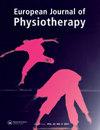Remote physiotherapy in Finland—suitability, usability and factors affecting its use
IF 1.1
Q3 REHABILITATION
引用次数: 0
Abstract
Abstract Objective To investigate physiotherapists’ views on suitability, usability and factors affecting the use of remote physiotherapy in Finland. Design A cross-sectional, web-based questionnaire study. Subjects Members of the Finnish Association of Physiotherapists and a private physiotherapy organisation. Methods The questionnaire included questions on remote physiotherapy′s suitability (0 = not suitable at all to 10 = fully suitable) for different physiotherapy tasks (consultation, guidance and counselling, exercise, assessment and corrective act at the workplace), a reason to implement remote physiotherapy, how often remote physiotherapy is used at different stages of the physiotherapy process and factors affecting the use of remote physiotherapy. Results The response rate was 9.9% (N=662/6525; 76.1% female). The mean suitability ‘score’ for remote physiotherapy differed from 7.6 (consultation, guidance and counselling) to 3.8 (corrective act at a workplace). Physiotherapists with at least one year experience of working with remote physiotherapy reported that it is better suited to consultation, guidance and counselling, exercise and assessment (p-values <.05) than did those with less experience. Of the responders (physiotherapists), 72.5% used conventional physiotherapy, 7.2% used remote physiotherapy and 20.2% used a combination of the two as primary work method. Conclusion Physiotherapists stated that remote physiotherapy suits especially for consultation, guidance and counselling, but it is still minimally used as primary work method in different stages of the physiotherapy process.芬兰的远程物理治疗——适用性、可用性和影响其使用的因素
本文章由计算机程序翻译,如有差异,请以英文原文为准。
求助全文
约1分钟内获得全文
求助全文

 求助内容:
求助内容: 应助结果提醒方式:
应助结果提醒方式:


